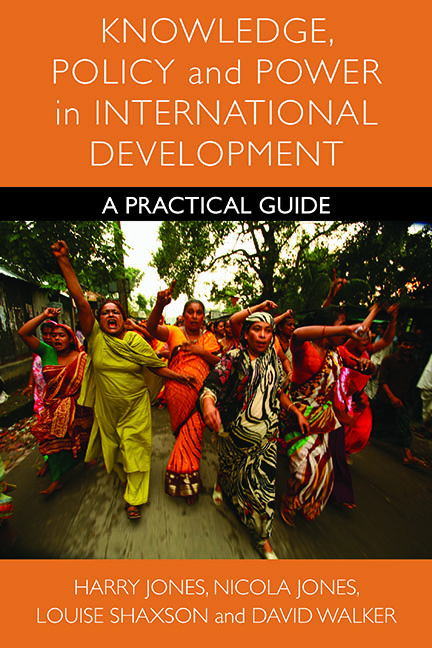Book contents
- Frontmatter
- Contents
- List of tables and figures
- List of acronyms
- Glossary
- Acknowledgements
- one Navigating the Knowledge–Policy Landscape
- two Mapping political context
- three Engaging actors
- four Integrating different types of knowledge
- five Facilitating knowledge interaction
- six Conclusion and policy implications
- References
- Index
four - Integrating different types of knowledge
Published online by Cambridge University Press: 01 September 2022
- Frontmatter
- Contents
- List of tables and figures
- List of acronyms
- Glossary
- Acknowledgements
- one Navigating the Knowledge–Policy Landscape
- two Mapping political context
- three Engaging actors
- four Integrating different types of knowledge
- five Facilitating knowledge interaction
- six Conclusion and policy implications
- References
- Index
Summary
Analysts of the policy process have advocated for strengthening links between knowledge and policy for decades (Head, 2010). A poorly functioning interface will give rise to policies and programmes that reflect the biases of certain individuals or groups (see Chapter Three); rely on untested views or speculative conjectures that may result in ineffective policy; or draw on pieces of knowledge selectively, covering up ideological standpoints or decisions made behind closed doors (Davies, 2004).
This chapter presents the conceptual and practical reasons for taking a broad view of what ‘knowledge’ is used in policy, on both theoretical and empirical grounds. It focuses in particular on three types of knowledge – research-based, practice-informed and citizen knowledge. It then analyses the power dynamics around each type of knowledge and some of the practical steps that can be taken to improve both the supply and demand for knowledge in policy.
By the end of this chapter, readers will be able to answer the following questions:
• What are the different ways of conceptualising knowledge?
• Why is ‘knowledge’ such a contested issue?
• What are the factors to consider in analysing the different types of knowledge used in policy?
» What does each type of knowledge bring to the policy process?
» What are the challenges to using them effectively?
The chapter starts with a discussion of the various conceptions of knowledge and how they affect our analysis of the interface between knowledge and policy. From this, we draw out a framework that distinguishes between three types of knowledge, which we use to analyse the factors affecting how knowledge is used, brokered and communicated, and produced for policy purposes. Finally, we look at some of the practical issues that need to be addressed to improve how each of the three different types of knowledge are incorporated into policy; paying particular attention to the institutional incentives that condition the demand for knowledge in policymaking.
Understanding the role of knowledge at the knowledge– policy interface
What is knowledge?
We do not aim to adjudicate between competing claims from the prolific literature to find a single neat answer to the question ‘What is knowledge?’
- Type
- Chapter
- Information
- Knowledge, Policy and Power in International DevelopmentA Practical Guide, pp. 81 - 122Publisher: Bristol University PressPrint publication year: 2012

